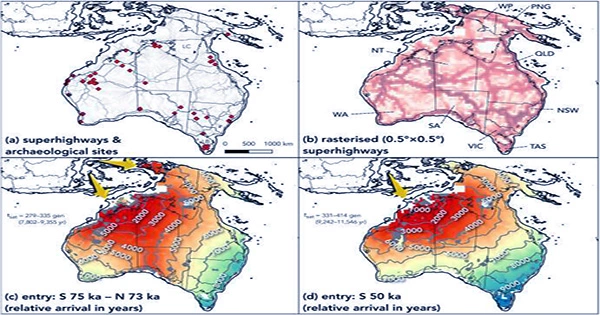The area south of the Caspian Sea in northern Iran was determined to be the most likely route for eastern Neanderthal migration from Europe by researchers modeling the migration. This finding implies that there may be significant yet undiscovered archaeological sites hidden in less explored areas along the way.
According to computer simulations of Neanderthal dispersal along fictitious Northern and Southern Caspian routes using available archaeological and physiological data, the study was recently published in the journal PLOS ONE. The modeling forecasts that these routes will pass through the ideal paleolithic habitats, which are unexplored areas of Iran and Central Asia.
In an earlier genetic study, “Neanderthals in central Asia and Siberia,” conducted by the Max Planck Institute for Evolutionary Anthropology, which is mentioned in the paper, Neanderthals in Uzbekistan and the Altai region of southern Siberia were linked to having European ancestry. How did they get there is the issue?

Mapping the corridor
To build a model to find the Least-Cost-Path, researchers used an open-source geographic information system called QGIS that was layered with bio-geographical knowledge about historical climate conditions (LCP).
Similar to how a GPS in a vehicle will only direct you to a location by following roadways and may route you around traffic, construction, or road closures, LCP models don’t always use the most direct linear paths because they take into consideration clear paths and expensive obstacles along the way. The “cost” of the journey is weighted by the amount of time it takes to get there when a GPS plots a route. When calculating the “cost,” factors like climate, resource availability, and advantages for subsistence along the way are taken into consideration.
Researchers used LCP analysis to model the probable Neanderthal dispersal routes between two cave sites in Russia’s Altai Mountains and two archaeologically known cave sites in the Caucasus (one with Micoquian cultural materials and the other with Mousterian materials). The two sets of cultural items show differences in tools and artifacts between sites (Micoquian to the north and Mousterian to the south) that are separated by high mountains, and they may reflect two different lines of Neanderthal migration into and out of the area.
The researchers searched for regions that experienced the fewest climatic fluctuations and were most likely to offer stable environments for flora and fauna using climate data obtained from PaleoClim.org and other sources. In contrast to nearby areas, the Southern Caspian Sea corridor stood out as being relatively humid and mild, making it an excellent route for growth and settlement. In addition to being the ideal route for leaving Europe, it would have been a welcoming entry point into Europe for migrations of modern humans (Homo sapiens) coming from Africa and via the Levant, raising the possibility that this could have been a significant cross-cultural meeting point between our two species.
Neanderthals were the most advanced people in Europe for a few hundred thousand years. They tended to their ill, managed fire for warmth and cooking, and hunted the biggest prey as an apex predator. They also made cave art. The most prevalent group of people in their era, neanderthals could be found from the farthest western and northern regions of Europe to as far south as Israel and Palestine, and as far east as Central Asia and Siberia. Intermarriage between modern humans and Neanderthals occurred frequently and in various places, as we have learned from researching our own genomic history, making the Neanderthals’ history an integral part of our own.
















